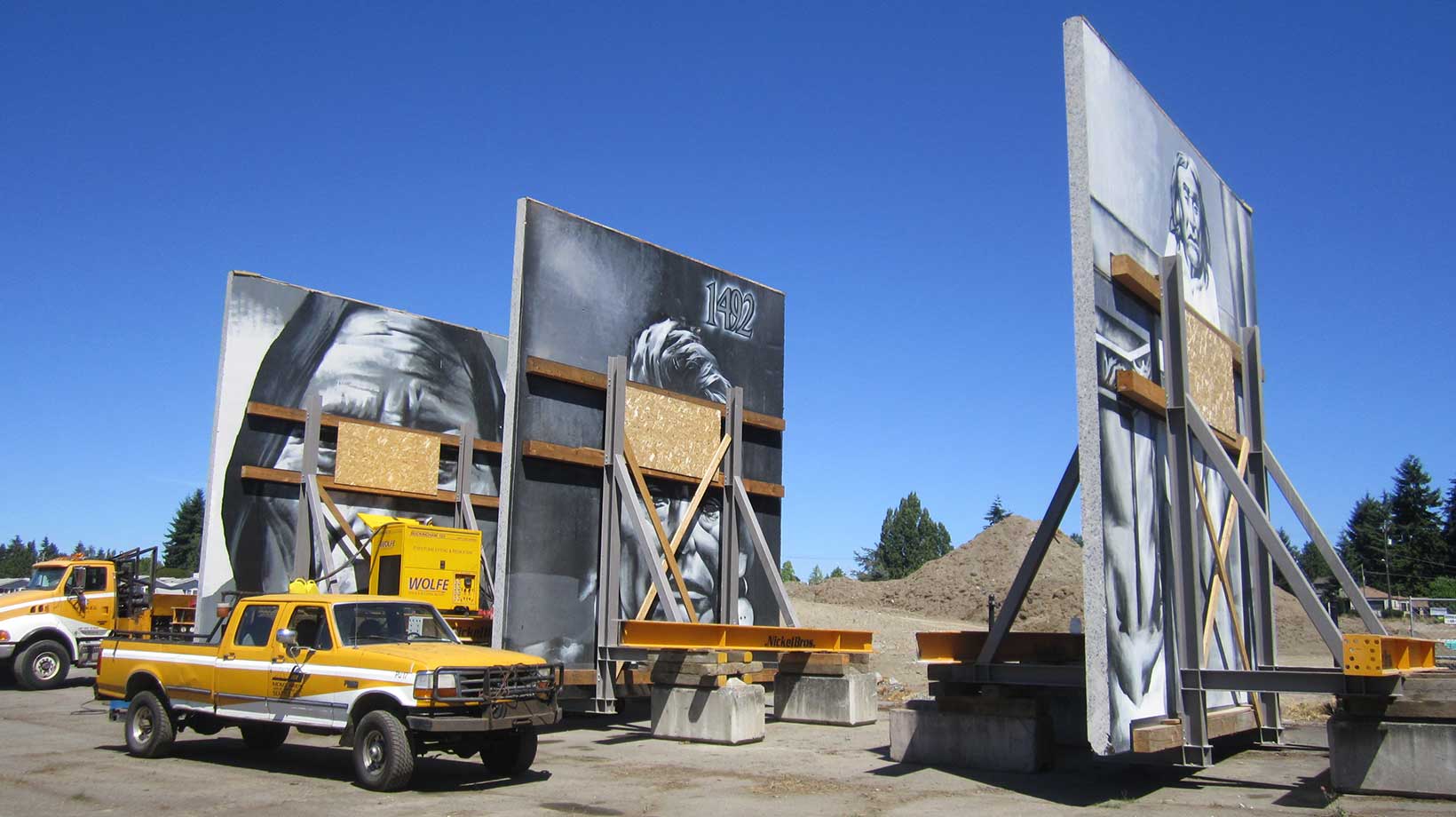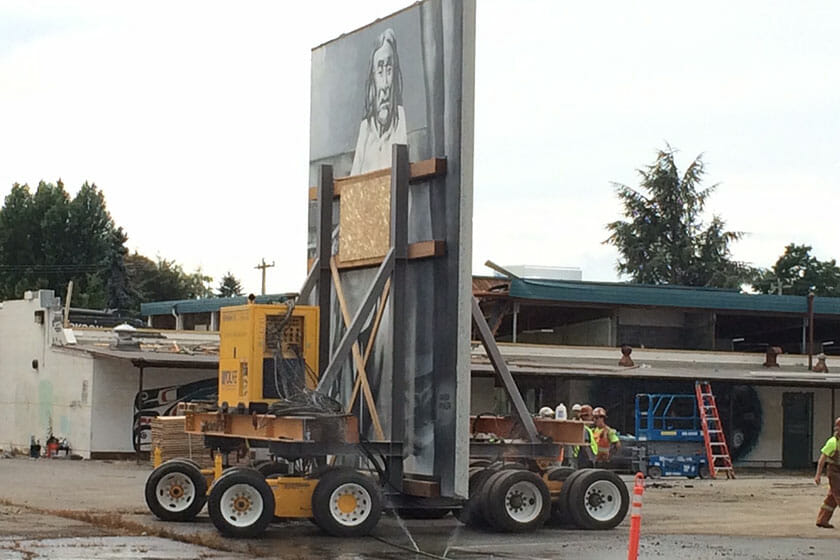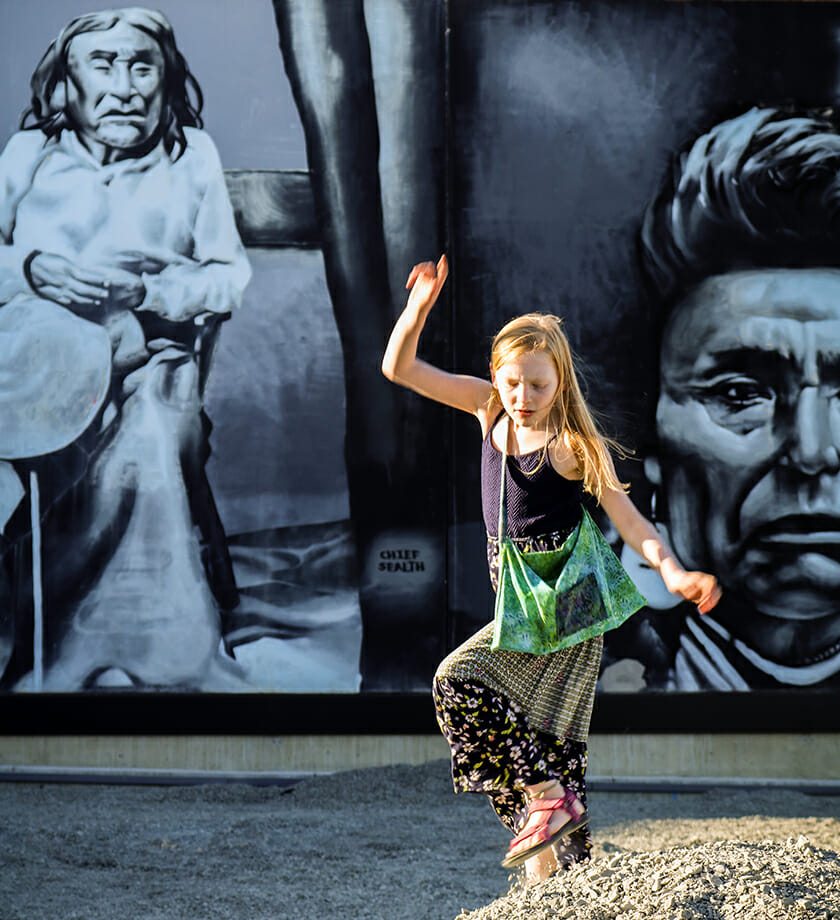The Story of the Murals Preserving beloved cultural assets became an integral part of a new vision for a new school. The shared-use, 16.9 acre campus is designed to accommodate Seattle Public Schools rapid growth, housing three distinct programs for 1,660 students at Cascadia Elementary School, Robert Eagle Staff Middle School and Licton Springs K-8. The site also houses a city-run preschool facility, athletic fields, upgraded pedestrian and bike amenities, and ~$1.5M of neighborhood flood control infrastructure developed in conjunction with SPU & SDOT.
In the design process, cultural assets valued by the community needed to be considered. Painted by a local Native American artist on the walls of the original school building – which in the past housed a Native American school program – the murals at Wilson Pacific were at first slated to be demolished. However, over time these un-designed landmarks depicting Native American figures and Native culture had become part of the surrounding neighborhood’s character and were genuinely cherished by the local community, which strongly opposed their destruction. The decision was made, late in the Design Development phase, to preserve the murals and incorporate them into the new campus as part of both the new Elementary and Middle School buildings.



Working in collaboration with renowned Native American architect Johnpaul Jones of Jones & Jones Architects, the design and construction teams determined it would be unfeasible to arrange the project around the mural’s existing locations, which was the most economical option. That conclusion led to the development of a strategy to secure, cut, move, store, and attach to the forthcoming structural frame, eight enormous CMU and precast concrete walls without damaging their painted surfaces. This also meant the sections of wall where the murals would be relocated had to be built in the opposite order of a regular exterior wall, from the outside in, generating significant construction sequencing and detailing challenges.
This story shows the value we place as a firm in collaborating with the owner, consultants, and general contractors throughout all phases of design and construction. It shows how we value listening to our communities and changing course when we recognize our design approach might not be entirely right, even if that goes against the original program and budget. That we have the ability and courage to face unique technical challenges in our work – when was the last time you had to cut and move a giant mural to build wall? In essence, it shows how much we care.
Regardless of what one might think of the mural’s artistic value and the high financial cost it took to accomplish this preservation effort, what we’re most proud of in this process is the fact the community’s voice was heard, a neighborhood’s character respected, and a culture who is used to seeing their history and achievements devalued and erased was recognized and brought to center stage.
Background of Robert Eagle Staff
Read the Seattle Times article: New Seattle school honors Native visionary Robert Eaglestaff
